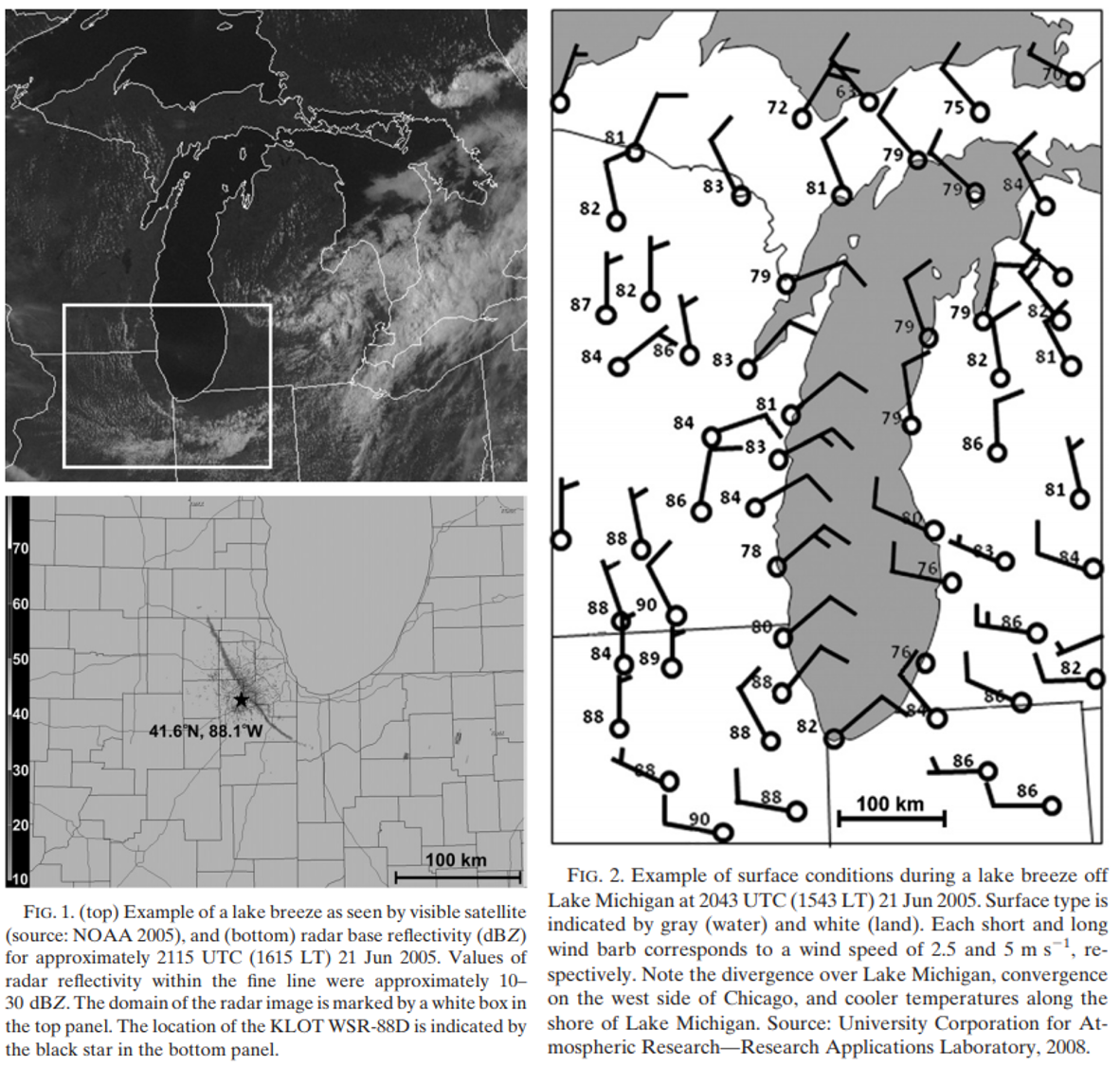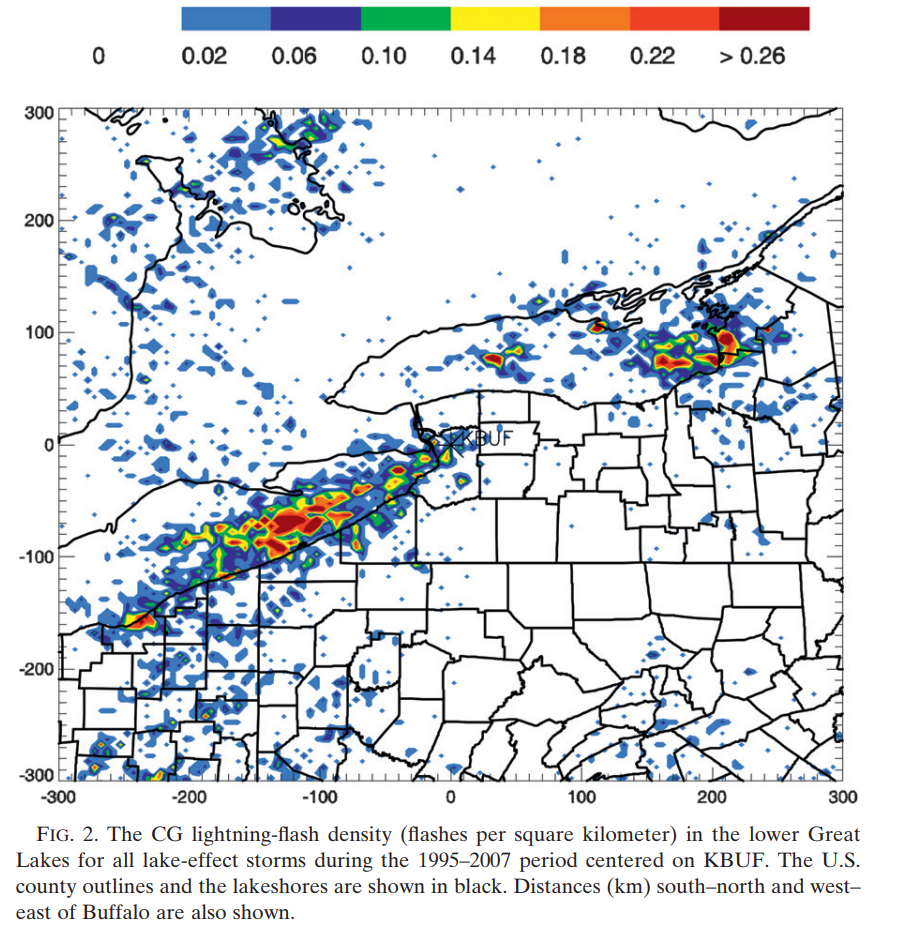My Google Scholar Page Back to Research Homepage
Surrounded by Lakes Michigan, Huron, and Erie, the lower peninsula of Michigan is an ideal location for field studies in coastal meteorology. My group at CMU will take full advantage of this with our mobile mesonet set to arrive in late winter, multirotor unmanned aircraft for lower boundary layer profiling, and the meteorology program's rawinsonde equipment. These observations will be complemented by idealized modeling studies and will serve as the foundation for larger, collaborative field campaigns. My specializations within coastal meteorology include lake-breeze structure, urban heat islands in coastal cities, and lake-effect storms.
Lake-Breeze Structure
I am currently investigating differences in lake-breeze structure under conditions of synoptic-scale onshore versus offshore flow. As illustrated in the figures below from Keeler and Kristovich 2012, a distinct lake-breeze front is not present when the synoptic-scale flow is onshore (e.g., western Michigan), whereas along-shore flow (e.g., northeast Illinois) or offshore flow results in a well-defined lake-breeze front. In the coming summers I will take students into the field to examine thermal and moisture gradients associated with onshore and offshore synoptic-scale flow in western Michigan, with a focus on the implications of these differences on stability and the potential for convective initiation. I am also particularly interested in the influce of Lake Michigan on pre-existing convection and am seeking additional funding to conduct research in this area.

Urban Heat Islands in Coastal Cities
Urban Heat Islands (UHI) and Lake/Sea Breezes are classic examples of thermally-direct circulations. Given the substantial portion of the world's population that resides in coastal cities, understanding these circulations, how they interact with one another, and their combined effect on weather can have a large impact on society. Previous modeling studies suggested that one impact of the UHI circulation is a reduction in the inland progression of sea-breeze fronts through the inland suburbs of a city. This hypothesis was confirmed in Keeler and Kristovich 2012 utilizing standard atmospheric observations including the WSR-88D radar located in Romeoville, IL and surface temperature data from buoys over Lake Michigan and automated stations over land throughout northeast Illinois. My continued research in this area is motivated by the substantial ongoing population growth in coastal cities across the globe and the tendency of these areas to be adversely affected by heat waves, flash flooding, and other high-impact weather disasters. PHOTO: Panorama of downtown Chicago and Lake Michigan, September 2016.

Lake-Effect Storms
My research interests in this area include the structure, kinematics, thermodynamics, and climatology of lake-effect storms in the eastern Great Lakes. In Steiger et al. 2009, my contributions included the development of a climatology of lightning-producing lake-effect storms in the lower Great Lakes. This climatology was used in part to justify and plan the timing of the Ontario Winter Lake-effect Systems (OWLeS) campaign. My participation in the OWLeS field phase included rawinsonde launches from Darlington Provincial Park in Ontario, Canada. These soundings were used to assess the structure of the boundary layer upwind of the storms that were observed across Lake Ontario in New York State.
